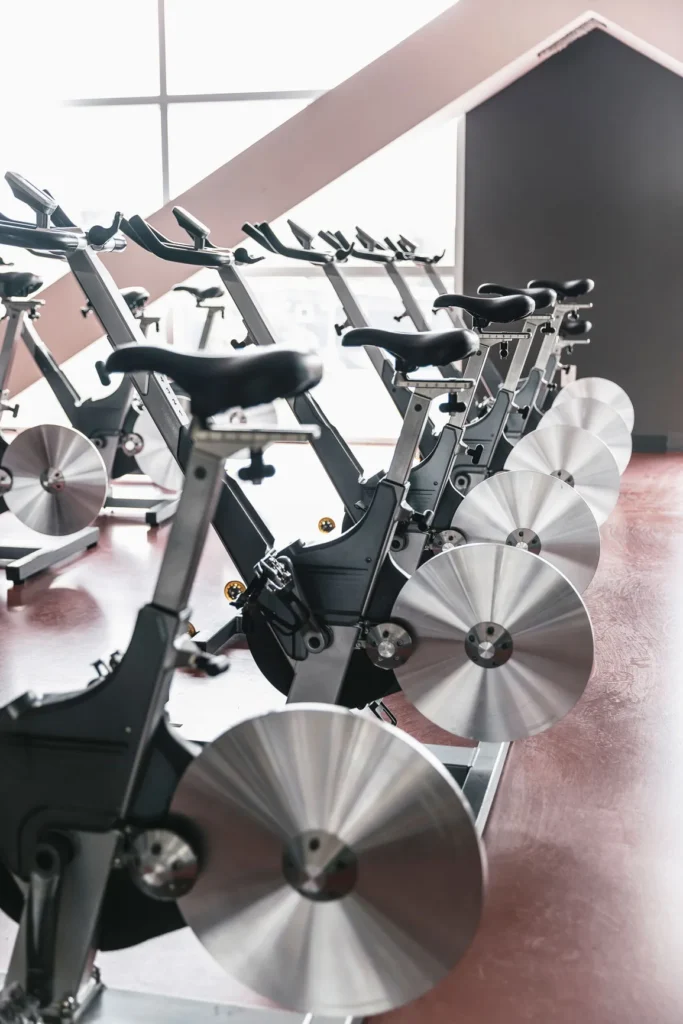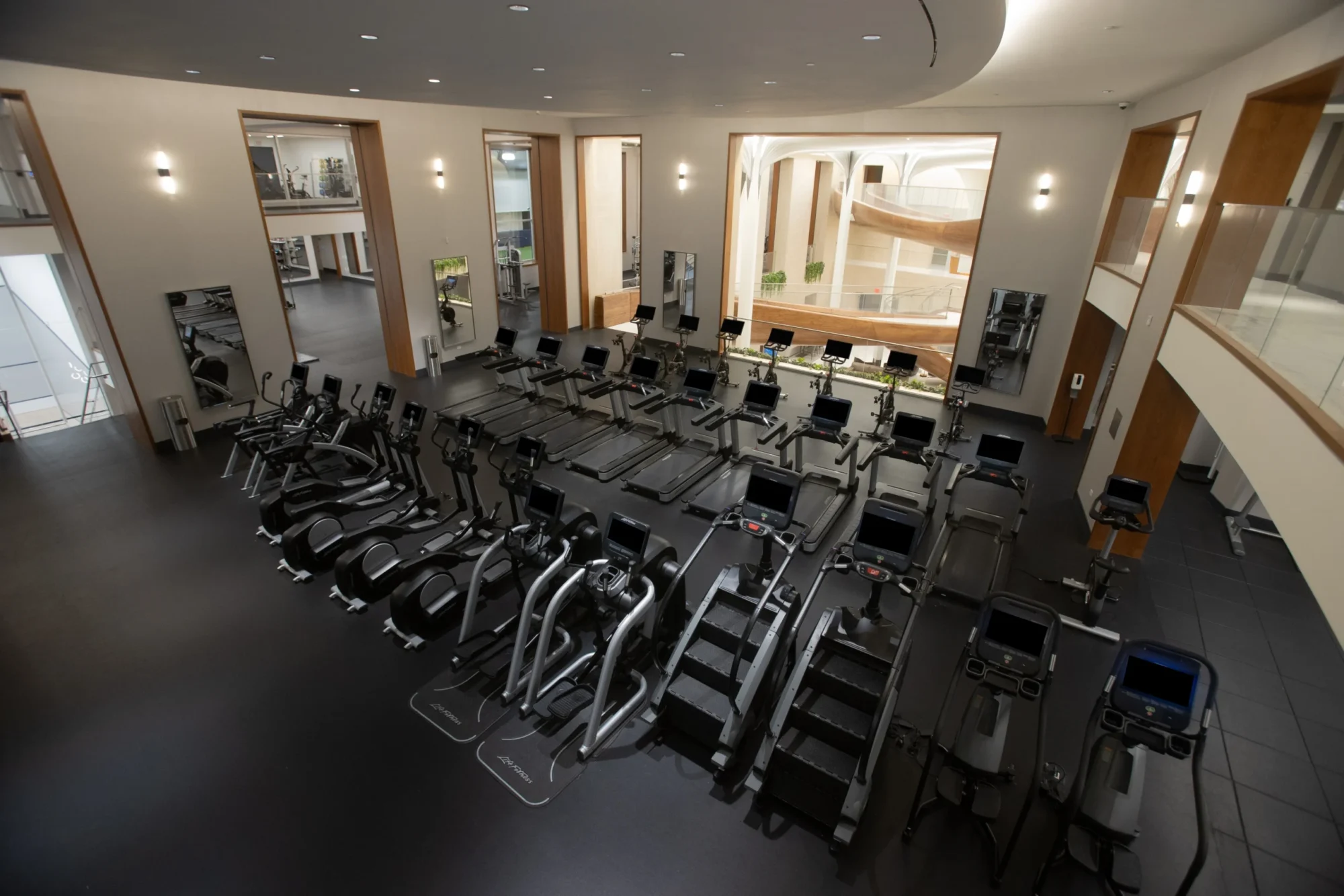Athletech News spoke with LIVunLtd CEO Lisa Kendall to discover the winning strategy to creating an exceptional fitness and wellness experience with the right vibes
In the world of fitness and wellness, attention often goes to cutting-edge equipment and the latest fitness trends. But behind it all is the art of creating an environment that meets ever-evolving consumer expectations—especially as competition intensifies.
In 2025 and beyond, fitness and wellness are ubiquitous. No longer confined to brightly lit gyms or studios with moody lighting, they are the businesses that now anchor high-end residential buildings and play an essential role in corporate offices, on campuses, in community centers and more as consumers become health-focused.
LIVunLtd, a brand under The Amenity Collective, is at the forefront of the shift. Offering facility management, fitness equipment, programming and consulting, the New York-based brand helps build communities across mixed-use developments, residential condos in major U.S. cities, municipal recreation centers, college campuses and corporate fitness hubs.
And if recent history is any indication, one can expect to see a continued emphasis on fitness and wellness across all areas of real estate.
JetSet Pilates is among the brands taking a fresh approach to the first rule of real estate: location, location, location. The Miami-based Pilates franchise is preparing to open a two-story flagship studio in Coconut Grove, Florida, at the upscale Mr. C Residences, the sister company to international hospitality brand Cipriani. They’re not alone. North Carolina-based indoor cycling brand Revel and Solidcore were recently named the first retail tenants of The Novus, a new luxury residential tower in Durham, North Carolina. Meanwhile, Newrock Partners, the real estate developer behind a posh apartment project in Oakland Park, Florida, announced in 2023 that it would welcome three complementary brands to its project: women’s boutique retailer Monkee’s, Pure Barre and Pause Studio, citing its goal of promoting well-being and connectivity.
Athletech News spoke with LIVunLtd CEO Lisa Kendall about the brand’s vision during this intersection of real estate and wellness, her insights on shifting consumer preferences and the latest trends. Of course, fitness equipment still remains an important part of the equation.

Part of LIVunLtd’s approach, Kendall explains, involves partnering with state-of-the-art equipment providers that combine sleek design with advanced functionality, a strategy Kendall says ensures both an exceptional user experience and an elevated vibe.
“Whether it’s a calming yoga studio or a dynamic functional training zone, our goal is to create aesthetically pleasing and personalized spaces that inspire and support overall wellness,” she says. “We believe the best spaces blend form and function seamlessly and that the best equipment lends to great design.”
Eco-Forward
In keeping pulse with the latest consumer preferences, the brand is attuned to Gen Z and millennials’ commitment to environmental sustainability—an important consideration given the findings of Deloitte’s 2024 Global Gen Z and Millennial Survey. In Deloitte’s report, 64% of Gen Z consumers say they are willing to pay more for environmentally sustainable products, while 25% have reduced or ended relationships with businesses due to unsustainable practices.
“We prioritize thoughtful layouts that optimize usability while creating visually appealing environments,” Kendall shares. “For example, we incorporate designer elements like feature walls, eco-friendly flooring and natural finishes to warm up the room, camouflage equipment when needed, and elevate the space without compromising its purpose.”

Aesthetic Appeal
Alongside sustainability and eco-friendly aspects, aesthetics still matter—as young (and/or discerning) fitness consumers gravitate toward Instagram-worthy spaces with monochrome palettes, minimalism and natural elements. And, as Kendall indicates, integrating both simultaneously is a win-win.
“With all of our designs, we bring elements of the outdoors inside by incorporating plants and greenery, bamboo shrouding and more,” she says. “We carefully select durable, long-lasting equipment and emphasize proper maintenance to extend its lifecycle, reducing waste. Beyond equipment, we focus on energy-efficient lighting, water conservation, and repurposing or recycling old machines—sometimes even donating them to communities in need. For us, sustainability isn’t just a trend; it’s a commitment to creating spaces that support both people and the planet.”
Specialized Spaces
As Kendall sees it, consumers also desire multi-purpose spaces — ones that extend beyond physical fitness and integrate mental and social wellness components.
“Recovery zones, group exercise classes and strength training areas are especially popular,” she explains. “We’re also designing more boutique-like experiences within larger facilities—creating specialized environments like high-end yoga studios or spin rooms that feel private and exclusive. A holistic offering that also includes mental resilience programs and nutrition consulting is increasingly in demand.”
As for her recommendations for fitness and wellness businesses looking to make their mark both functionally and aesthetically, Kendall advises going back to the basics.
“Start by understanding your community’s needs to find the right mix with your space,” she suggests, adding that it’s vital to balance traditional fitness spaces with areas dedicated to recovery, social engagement and mental well-being.
“Technology should play a key role throughout, enabling hybrid experiences that connect users onsite and remotely,” she offers. “Above all, design choices should create an inviting and dynamic environment, making every visit an engaging experience.”
What’s Ahead
In terms of the trends she expects to see in the coming year, Kendall predicts that the role of fitness spaces will continue to become much more holistic.
“We expect to see more integration of mental health resources, nutrition consultation, hybrid training options and social wellness initiatives,” she says. “Flexible designs that can adapt to changing trends will also be key as the industry continues to evolve.”














